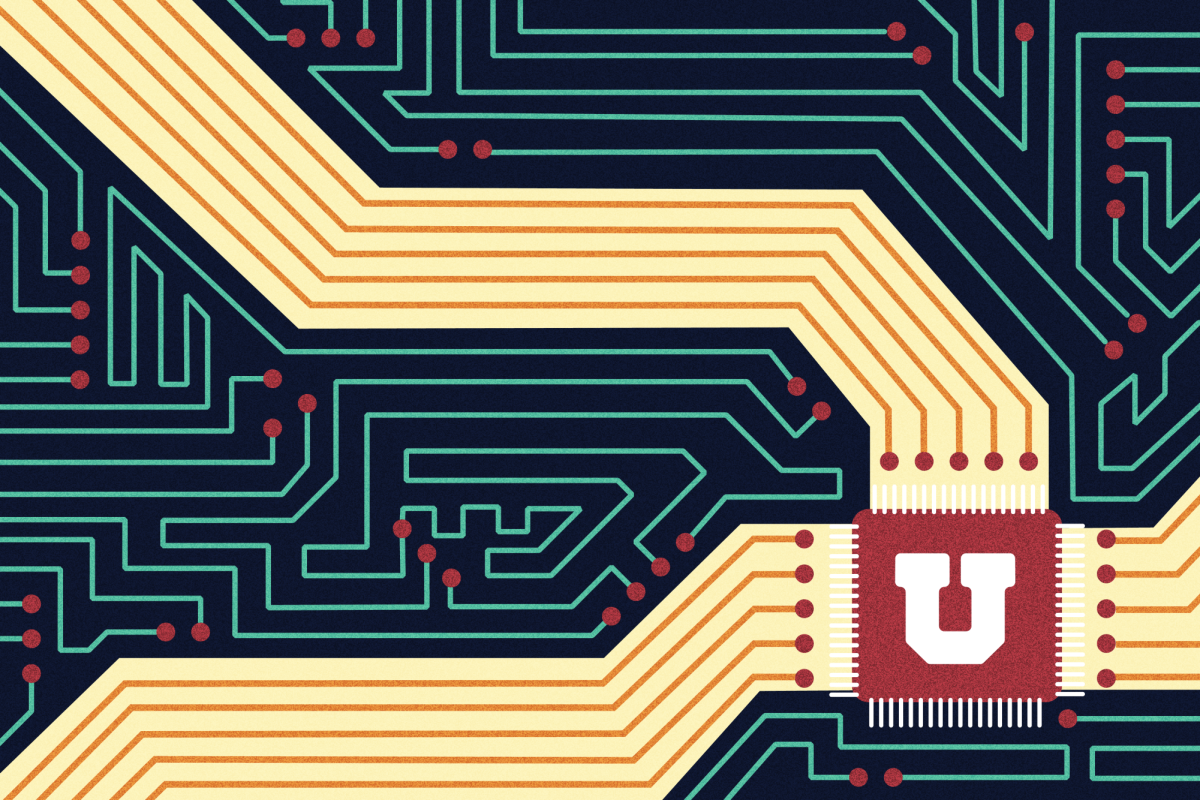The University of Utah is advancing semiconductor research, education and workforce development by establishing a statewide network of private industry and colleges.
The organization known as The Utah Network for Integrated Computing and Semiconductor Research and Education will create a shared curriculum between colleges and universities throughout the state. The U’s nano-fabrication lab will be the central hands-on training facility.
“A clean room facility with … semiconductor, fabrication, equipment — it’s something that is pretty much unfeasible to exist in all universities,” said Berardi Sensale-Rodriguez, associate professor of computer and electrical engineering and associate director of the Utah Nanofab. “And here in Utah, the University of Utah is the biggest and most prepared such facility.”
Semiconductor chips are typically made of silicon and are the foundation of most modern electronics. They are crucial for many industries, including health care, transportation and telecommunications.
Hanseup Kim, professor of electrical and computer engineering and the director of UNICOS, said ten universities are members of the organization. These academic partners include Brigham Young University, Salt Lake Community College, Mountainland Technical College and Utah State University.
“The objective of … UNICOS is to increase the overall quality of education and training for the semiconductor area,” Kim said. “High school graduates, associate degree students … master’s, Ph.D. All skill levels should be able to come if they want to gain those experiences.”
UNICOS aims to boost workforce development by creating a stackable certificate program that provides hands-on job training for all educational levels. Kim said industry partners will work closely with universities to finalize the contents of the courses to ensure they meet industry demands.
The certificate programs will likely start in the summer of 2024 once funding for the program is finalized.
“We are looking currently for support from the state to finance those programs,” Sensale-Rodriguez said. “And eventually, we would like them to be self-sustainable, so once the programs are established, ideally, we would like to go into a model in which the industry basically supports them. But you see, first you need to show that there is value from these programs and that the programs work.”
One of UNICOS’s industry partners is Texas Instruments, which has recently invested $11 billion to build its second fabrication facility in Lehi. The company said the project will create approximately 800 new jobs in the semiconductor industry.
At a recent groundbreaking ceremony, Gov. Spencer Cox said the new facility is the “greatest single economic investment in Utah history.”
Another objective of UNICOS is to boost research and development in semiconductors. Sensale-Rodriguez said they have yet to receive federal funding, but they aim to obtain some through the CHIPS and Science Act.
“The research and development that can be done here can go towards technologies that are strategic for the different applications,” Sensale-Rodriguez said. “In terms of semiconductors … our focus would be mostly on semiconductors for defense.”
The Utah Nanofab currently has about 100 principal investigators supported by federal funding. Kim said the total volume of research at the nanofab amounts to $150 million — roughly 20% of the U’s research budget.
“What we want in the future is … through this ecosystem that the center will create is [to] be able to get bigger, larger grants that have a bigger impact,” Sensale-Rodriguez said.




